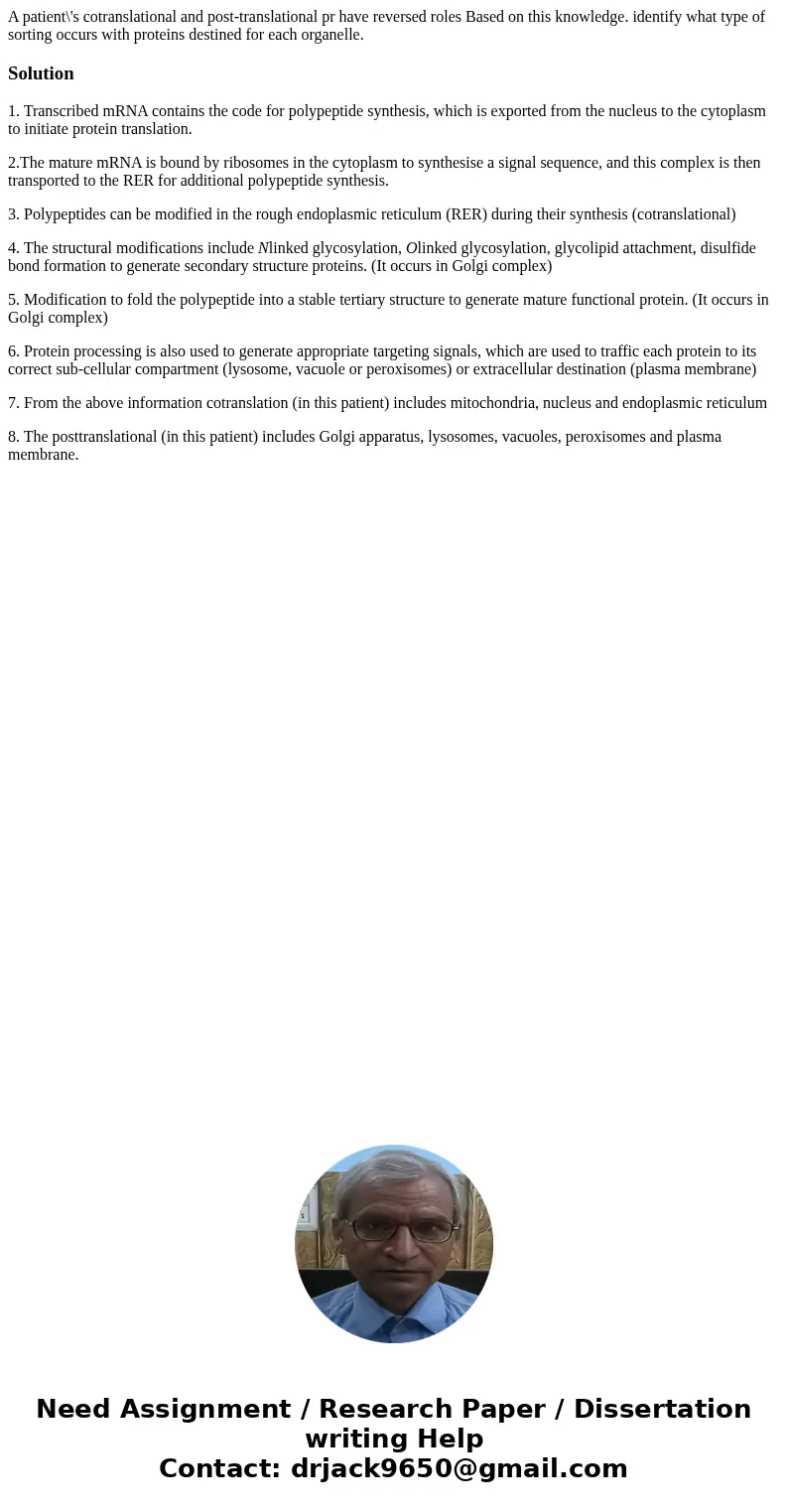A patients cotranslational and posttranslational pr have rev
Solution
1. Transcribed mRNA contains the code for polypeptide synthesis, which is exported from the nucleus to the cytoplasm to initiate protein translation.
2.The mature mRNA is bound by ribosomes in the cytoplasm to synthesise a signal sequence, and this complex is then transported to the RER for additional polypeptide synthesis.
3. Polypeptides can be modified in the rough endoplasmic reticulum (RER) during their synthesis (cotranslational)
4. The structural modifications include Nlinked glycosylation, Olinked glycosylation, glycolipid attachment, disulfide bond formation to generate secondary structure proteins. (It occurs in Golgi complex)
5. Modification to fold the polypeptide into a stable tertiary structure to generate mature functional protein. (It occurs in Golgi complex)
6. Protein processing is also used to generate appropriate targeting signals, which are used to traffic each protein to its correct sub-cellular compartment (lysosome, vacuole or peroxisomes) or extracellular destination (plasma membrane)
7. From the above information cotranslation (in this patient) includes mitochondria, nucleus and endoplasmic reticulum
8. The posttranslational (in this patient) includes Golgi apparatus, lysosomes, vacuoles, peroxisomes and plasma membrane.

 Homework Sourse
Homework Sourse